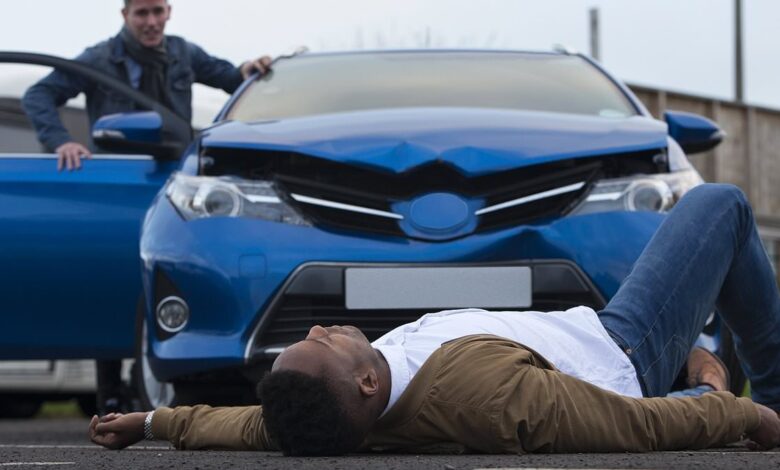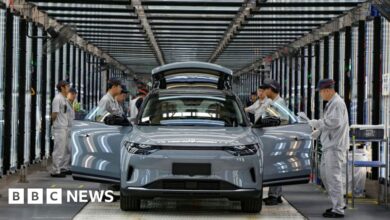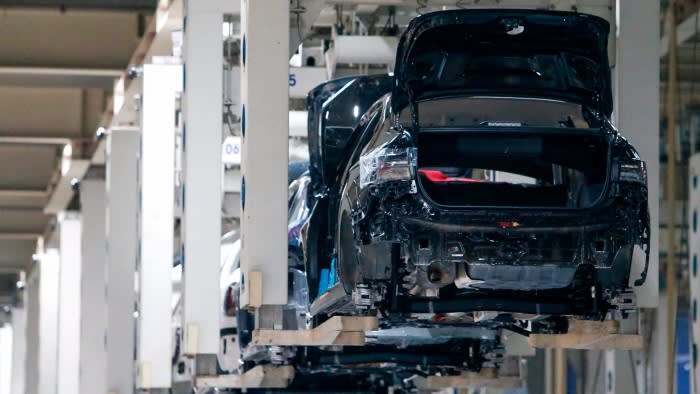Pedestrians are TWICE as likely to be hit by battery-powered vehicles than petrol or diesel ones, study finds

- Electric cars are much quieter than petrol or diesal vehicles
- Concerns have been raised they pose more of a safety hazard to pedestrians
Pedestrians are twice as likely to be hit by electric or hybrid cars as petrol or diesel vehicles, warns new research.
And the risk is three times higher in towns and cities, according to the study of road casualty statistics in Britain.
Measures need to be taken to reduce the risk amid the drive to phase out fossil-fuelled vehicles to reach ‘Net Zero’ environmental targets, say scientists.
Road traffic injuries are currently the leading cause of death among children and young people – and one in four road traffic fatalities are pedestrians.
Amid the ongoing shift to electric and hybrid cars, concerns have been raised that such vehicles may pose more of a safety hazard to pedestrians than fossil-fuelled cars because they are quieter.
Click here to resize this module
The risk is even greater in urban areas where background ambient noise levels are higher, say safety experts.
Researchers compared the differences in pedestrian casualty rates for every 100 million miles of road travel in Britain between electric and hybrid and fossil-fuelled cars, using Government road safety statistics.
The team estimated annual mileage from National Travel Survey (NTS) data.
The figures only started including hybrid as a vehicle fuel type in 2013.
An archiving glitch precluded uploading relevant data since 2018, so the period studied was from 2013 to 2017.
A total of 32 billion miles of electric and hybrid vehicle travel and three trillion miles of petrol or diesel vehicle travel were included in the analysis.
There were 916,713 casualties from reported road traffic collisions in Britain between 2013 and 2017.
Of those, 120,197 were pedestrians, 96,285 of whom were hit by a car or taxi.
Three-quarters of the pedestrian casualties, 71,666 (74 per cent), had been hit by a car or taxi powered by petrol or diesel.
Click here to resize this module
Around one in 50, 1,652 (two per cent), had been hit by an electric or hybrid vehicle.
But in nearly one in four of the pedestrian casualties, 22,829 (24 per cent), the vehicle type code was missing, according to the findings published online by the Journal of Epidemiology and Community Health.
Study author Professor Phil Edwards said most collisions occurred in urban areas, a greater proportion of which involved electric or hybrid vehicles (94 per cent) than petrol or diesel vehicles (88 per cent) compared to six per cent and 12 per cent, respectively, in rural areas.
Based on the figures, the research team calculated that between 2013 and 2017, the average annual casualty rates of pedestrians per 100 million miles of road travel were 5.16 for electric and hybrid vehicles and 2.40 for petrol and diesel vehicles.
Prof Edwards said: ‘This indicates that collisions with pedestrians were, on average, twice as likely with electric and hybrid vehicles as they were with petrol and diesel vehicles, and three times as likely in urban areas than in rural areas.’
The research team suggested that younger, less experienced drivers are more likely to be involved in a road traffic collision and are also more likely to own an electric car, possibly accounting for some of the observed heightened risk.
Prof Edwards, of the London School of Hygiene & Tropical Medicine, said: ‘More pedestrians are injured in Great Britain by petrol and diesel cars than by electric cars, but compared with petrol and diesel cars, electric cars pose a greater risk to pedestrians and the risk is greater in urban environments.
‘One plausible explanation for our results is that background ambient noise levels differ between urban and rural areas, causing electric vehicles to be less audible to pedestrians in urban areas.’
He added: ‘From a public health perspective, our results should not discourage active forms of transport beneficial to health, such as walking and cycling; rather they can be used to ensure that any potential increased traffic injury risks are understood and safeguarded against.’
The research team concluded that the heightened safety risk posed to pedestrians by electric and hybrid cars ‘needs to be mitigated as governments proceed to phase out petrol and diesel cars.’



